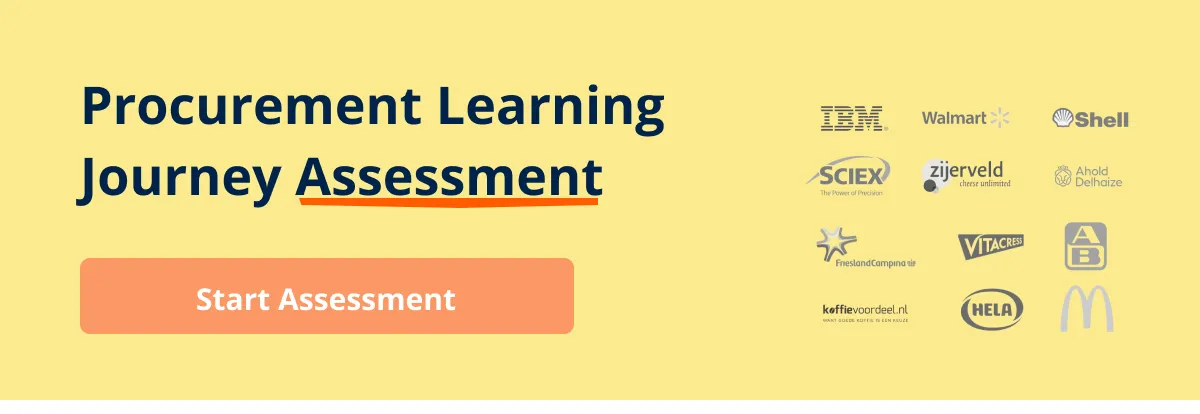Written by Marijn Overvest | Reviewed by Sjoerd Goedhart | Fact Checked by Ruud Emonds | Our editorial policy
Integrative Negotiation — Steps and Examples of Win-Win Outcomes
Key takeaways
- Integrative negotiation is a collaborative approach to achieved a win-win outcome for all parties involved.
- This negotiation ensures a positive outcome by keeping both parties happy with a joint solution.
- The integrative negotiation values prolonged partnership by value generation and considerations.
Integrative negotiation is an approach many negotiators use to achieve mutually beneficial outcomes through collaboration.
In this article, we will define integrative negotiation and explain its importance in successful deals. We will differentiate it from distributive negotiation and discuss the advantages and disadvantages of using integrative negotiation.
We will also guide you on how to initiate integrative negotiation. Furthermore, we will share examples, including my own, and insights from seasoned professionals to help you gain a deeper understanding of integrative negotiation.
After reading this article, you will gain the skills to use integrative negotiation to achieve deals beneficial for both parties, strengthening your relationship further.
Moreover, I have created a free-to-download negotiation-style template. It’s a PowerPoint file that can help you assess your main negotiation style.
What is Integrative Negotiation?
The integrative negotiation style is a method for achieving a win-win outcome for all parties involved. This approach is also known as interest-based bargaining or win-win bargaining.
It is a collaborative approach to bargaining where both parties strive to achieve a mutually beneficial outcome.
Unlike distributive negotiation, which focuses on dividing a fixed amount of resources, integrative negotiation aims to create value by exploring and satisfying each party’s underlying interests and concerns. We will delve more into their difference later in this article.
Integrative negotiation revolves around agreements that benefit all parties by addressing their respective interests.
These interests encompass desires, needs, and concerns that hold significance for the negotiating parties. Unfortunately, conflicts often arise in negotiations when these interests are overlooked.
The following are the characteristics of integrative negotiation:
1. Interest-based
This type of negotiation emphasizes understanding the needs and interests of all the parties, rather than just demands that may put one of the parties at a disadvantage.
2. Collaborative
In this type of negotiation, parties work together to find creative and innovative solutions that meet the interests of both parties.
3. Smooth communication
In integrative negotiation, there is an emphasis on transparency to facilitate effective collaboration, ultimately leading to the establishment of trust.
4. Stronger relationships
This negotiation type prioritizes maintaining relationships over a long term that builds stronger ties between the parties.
The Importance of Integrative Negotiation
Integrative negotiation is crucial as it produces satisfactory outcomes for the parties in dispute. Integrative solutions are more gratifying for the parties involved in the negotiation as the needs and concerns of both parties can align.
Integrative negotiation is a collaborative process that makes the parties end up helping each other. This prevents any ill will after the negotiation concludes.
Interest negotiation promotes a constructive and positive relationship between parties who have been in dispute previously.
The Difference Between Integrative and Distributive Negotiation
The following are some of the common differences between distributive and integrative negotiation:
Advantages and Disadvantages of Integrative Negotiation
Distributive and integrative negotiation is unique from each other. To negotiate well, you must know how these two negotiations work.
The following are the advantages and disadvantages of integrative negotiation:
How to Initiate an Integrative Negotiation
In integrative negotiation, it is important to set the right tone and approach when initiating this method with the other party for more success. Here are some of the steps to help you in integrative negotiation:
1. Building Relationship
To do this, you may start by having an open or friendly attitude. Introduce yourself and show interest in negotiating with the other party.
2. Establishing Common Goals
After establishing a relationship with the other party, it’s time to explore the broader objectives you aim to achieve together. Identify mutual interests to collaborate effectively, ensuring that all parties benefit.
When this happens, this indicates that you are striving for a win-win solution and are willing to work together on a mutually satisfactory solution.
3. Asking Open-Ended Questions
Ask questions that prompt the other party to share their interests, concerns, and priorities. For instance, you can ask, “What are your main priorities in this deal?” or “How can we find a solution that works for both of us?” It’s important to actively listen to their responses and demonstrate understanding.
4. Sharing Information and Introducing Creative Solutions
Here, you should share your interests, goals, and constraints. This encourages the other party to do the same. By sharing goals and information, you will be able to create innovative solutions with the other party.
In this step, you should keep the communication open and consistent to avoid any misunderstanding. Additionally, you should inform the other party of the progress and the changes made to what you have agreed upon.
5. Document Agreements and Next Steps
Lastly, you should document key points of agreement and outline the next steps. It is crucial to obtain agreement from both parties to prevent future misunderstandings.
Examples of Integrative Negotiation
Here are some examples of integrative negotiation for you to draw inspiration from:
Example 1:
John is a 35-year-old procurement manager who works at a large global retailer of electronica.
He is in charge of air conditioners and is negotiating with a small supplier. John’s company is responsible for 70% of the total sales of the air conditioning producer.
John calls the supplier and asks how the business has been going the last period, shows interest in the life of the wife and kids, and takes time to discuss last night’s match.
After talking about personal life for a couple of minutes, he subtly brings up the reason for his call. “I’m looking for 5000 air conditioners and would love to close a deal that’s great for both of us.”
John is of course looking for a good price, but he understands the main variables to the supplier in this negotiation and asks them which one is important to them today.
Turns out, the supplier would like to be paid in advance, as they’re in a tough cash position.
“Fair enough”, says John. Let’s take a 2% discount on our previous deal, but I’ll make sure the money is in your account by the end of this week.
“Deal!”
Outtake John: “Great news, same product for a cheaper price, proud of my savings.”
Outtake Producer: “Awesome guy, this John. A 2% discount isn’t great, but he listened to my needs. I would definitely do business with him again.”
Learning: the distributive negotiation from John leads to a long-term relationship and a direct discount on his purchase.
Example 2:
Emma, a 30-year-old luxury real estate agent, is negotiating with a motivated seller who owns a prime penthouse. The seller plans to relocate to be near family.
Emma begins by showing genuine interest in the seller’s well-being and family plans. They chat about their experiences and connect over community involvement.
Transitioning smoothly, Emma discusses the penthouse sale, asking what terms would make the process easy. The seller wants a quick sale and fair price due to their impending move.
Emma proposes a 30-day closing and a 1% commission reduction to aid the seller’s move. The seller appreciates the tailored offer and agrees.
Outtake Emma: “Thrilled we reached an agreement benefiting both the seller and my clients. This builds a strong foundation for future business.”
Outtake Seller: “Emma understood our situation and tailored the deal to our needs. Her flexibility and reduced commission made a difference. Highly recommended.”
Learning: Emma’s approach led to a successful transaction and a trusting, long-term relationship.
My Experience in Integrative Negotiation
Discover how platforms like Supplier Gateway are reshaping the procurement landscape. For this article, I shared my insights and perspective on Techno Hubs like Supplier Gateway.
The more skilled you are in using different styles, the more the other party will be drawn to settle close to your ideal outcome and closer to their limit.
Your selection of negotiation style should depend on your personality and the results of your earlier research on the styles that will probably be used by your negotiating counterpart.
Getting to recognize the different negotiation styleswill help you to negotiate way more efficiently! It’s important to know how and when to use particular styles to get more of what you want from the negotiation.
In my time as a Procurement Manager, I had to deal with 1500 different products delivered by 70 suppliers every year.
Suppliers were traditionally better equipped; most account managers I had been dealing with, only had to focus on one customer and thus the negotiator: me.
This led to what I call, the knowledge gap. They had way more time to prepare for negotiations. Most of them kept detailed notes on my negotiation style, likes, dislikes, interests, and family details.
In general, they were in a better position to choose the most appropriate style to approach me in the upcoming negotiation.
My advantage, on the other hand, was that I was negotiating all day & year: that experience leveraged the knowledge gap mostly: I practiced a full year with changing styles & using tactics. This helped me to have one important skill in any negotiation: I was not predictable.
Do you also want to learn to apply effective tactics and become unpredictable? There are a large number of styles & tactics that you can use in negotiations!
In our Negotiation Course For Procurement Professionals, we will teach you when which styles to use and in what way you should use them to your advantage!“
Procurement Expert’s Advice on Integrative Negotiation
For this article, we asked a seasoned procurement professional to share his insights regarding integrative negotiation.
Sjoerd Goedhart
Owner, Goedhart Interim Management & Consultancy
LinkedIn Profile: https://www.linkedin.com/in/sjoerdgoedhart/
1. Can you share a personal example of integrative negotiation? What can readers learn from this?
“A personal learning is that as a procurement professional it’s important to be experienced in different types of negotiation styles. Of course, you have a style which is your natural behavior, but being able to switch between styles and know which style works best in which situation/negotiation is a valuable asset for a professional.”
2. What should readers know about integrative negotiation?
“Integrative negotiations are only successful if both parties want to use this style. So it is important to explore this. In addition, this style can only be successful if you have the right skills to ask questions to understand the needs of the other party.
This style takes time, as well in negotiation, but more importantly, in good preparation. You must have or be willing to make this time to be successful in its application.”
Follow-up Question: Is there really a win-win situation in which both parties can benefit from a negotiation equally?
“While a win-win situation is achievable in negotiations, it’s important to acknowledge that neither party may obtain the best possible result. However, such scenarios can still be beneficial for both parties and contribute to maintaining a positive relationship.”
3. What is the biggest misconception about integrative negotiation? What do most people get wrong about it?
“People often have the idea that this is an easy negotiation strategy because you both want to benefit from it, so both are satisfied. In practice, this strategy requires a lot of preparation, an understanding of the needs of the other, and a clear plan to achieve the desired result.”
4. Can you provide a real-world example where integrative negotiation was successfully implemented in procurement?
“During the Ukraine crisis, a lot of food suppliers were faced with very high price increases for raw materials, energy, and transport. They wanted to increase their selling prices intermediate towards their customers, the food retailers.
In this case, an integrative negotiation was important to have, to have a better understanding of the impact for them (cost-price breakdown) and what important was for them at that moment e.g. besides a price increase they can give other variables to the retailer.
As a customer of that supplier, you don’t want to help them bankrupt because of the unforeseen price increases they were dealing with, with the consequence that you do have not any supply of the good and have out-of-stock in your own stores and customers were forced to change supermarkets for their daily groceries.”
5. What strategies can procurement professionals use to shift from a distributive to an integrative negotiation approach?
“Use the time factor to move from distributive to integrative, or to move the other party towards this style. This can irritate the other party and be alert and prepared for sanctions/measures through which the other party tries to persuade you to continue using the distributive style.”
6. Is integrative negotiation a practical approach in real-life situations, considering that negotiators often prioritize “winning” over the other party?
“In daily life, people unconsciously conduct many integrative negotiations but are often not aware of this. It is an approach from the relational aspect, which is often automatically chosen because in daily life this aspect is generally considered the most important style in the many negotiations we conduct.
Of course, you can also use the disruptive approach where the question is whether you want to go for the most optimal result and do not value a future relationship with the other person.”
Follow-up Question: What are the signs that you are in an integrative negotiation?
“In identifying signs of integrative negotiation, particularly in the context of my business experience, a key indicator is the absence of sanctions or punitive measures towards the other party.
For instance, threats like ‘I’ll stop delivery’ or ‘I’ll cease promotions’ are typically not part of integrative negotiations. An illustrative example from my own experience involves negotiating with PepsiCo for Albert Heijn-Lehse, where despite the significant purchase value and turnover involved, no such measures were discussed or employed.
Both parties engaged in robust negotiations without resorting to escalation tactics, indicating a preference for an integrative negotiating style. This approach allows for challenging negotiations without the risk of detrimental outcomes or threats.
Additionally, it fosters a collaborative atmosphere where mutually beneficial agreements can be reached. However, it’s worth noting that in strategic negotiations, there may be situations where parties leverage their negotiation power, but the absence of punitive measures remains a hallmark of integrative negotiation.
Ultimately, successful integrative negotiation hinges on fostering open communication, understanding mutual interests, and striving for mutually beneficial outcomes.”
7. How can procurement professionals tell if the other party is aiming for a mutually beneficial outcome rather than just seeking an advantage during negotiations?
“A win-win negotiation approach requires identifying and prioritizing the interests of both parties involved. It is a careful exploration of both your own position and that of your counterpart to find a mutually acceptable outcome.
By gathering relevant data and a deep understanding of the supplier’s perspective, you can effectively identify areas of common interest and create mutually beneficial solutions.”
Conclusion
In conclusion, integrative negotiation is a powerful approach that centers on achieving win-win outcomes for all parties involved.
It seeks to address the diverse interests, desires, and concerns that hold significance for each party.
By recognizing the potential for parties’ interests to align and generate mutual value, this approach enables the creation of agreements that satisfy all sides.
With the examples you read, you now know that the principles of integrative negotiation hold the potential to build trust, establish meaningful connections, and create positive, enduring relationships in a wide range of negotiation scenarios.
Frequentlyasked questions
What is Integrative Negotiation?
The integrative negotiation style is a method for achieving a win-win outcome for all parties involved. This approach is also known as interest-based bargaining or win-win bargaining.
It is a collaborative approach to bargaining where both parties strive to achieve a mutually beneficial outcome.
Why is it important?
Integrative negotiation is crucial because it leads to solutions that address the needs of both parties, fostering a more positive and collaborative relationship. This is in contrast to distributive negotiation, which often leaves one side feeling like a loser. By working together, integrative negotiation can build trust and goodwill that benefits both parties in the long run.
What is different about integrative negotiations?
Integrative negotiations focus on achieving the maximum result for both negotiation partners. Distributive negotiation is the exact opposite, both parties only care about their own interests. Because of this, integrative negotiations have the goal of a happy ending for all parties involved. Therefore, integrative negotiations usually take relatively long.
About the author
My name is Marijn Overvest, I’m the founder of Procurement Tactics. I have a deep passion for procurement, and I’ve upskilled over 200 procurement teams from all over the world. When I’m not working, I love running and cycling.


